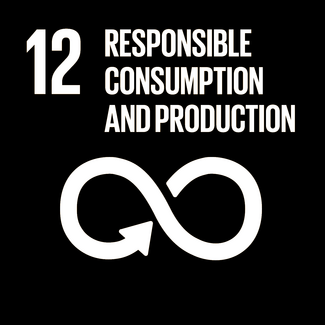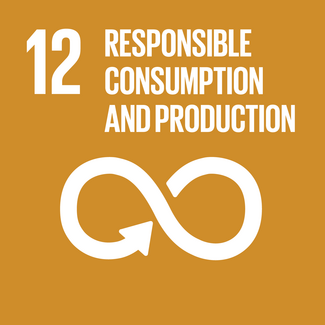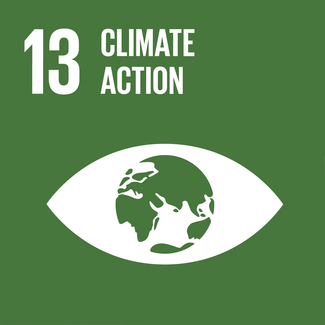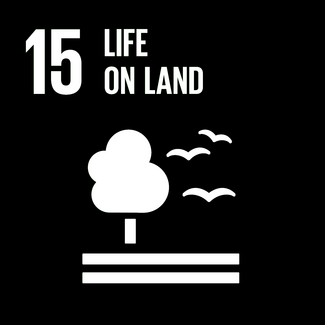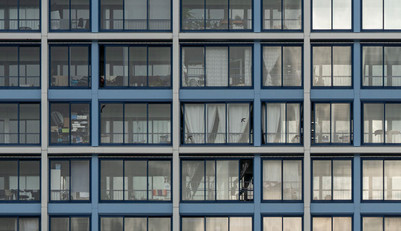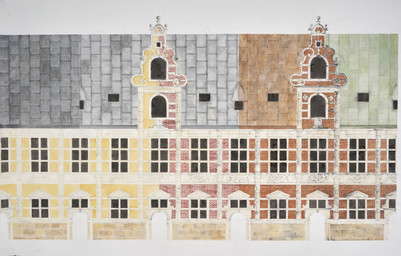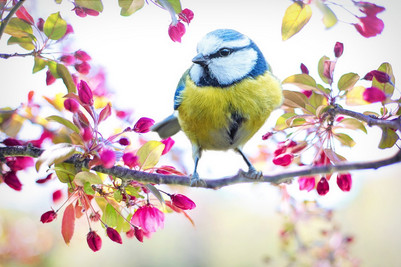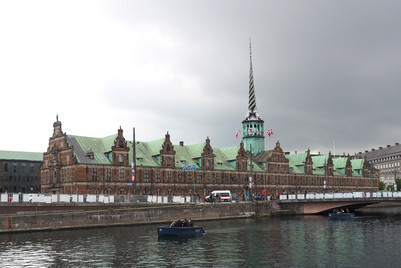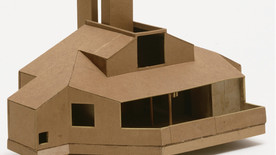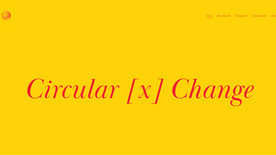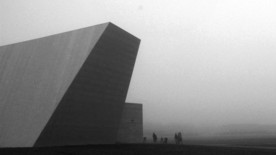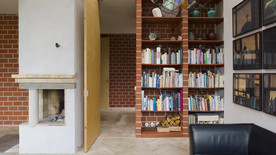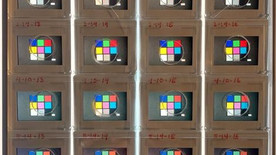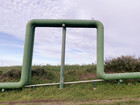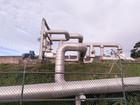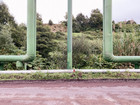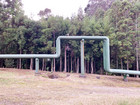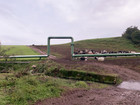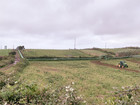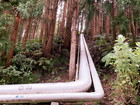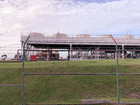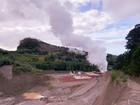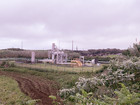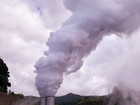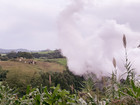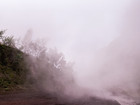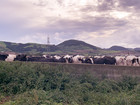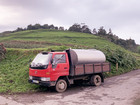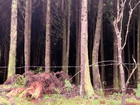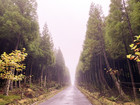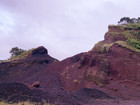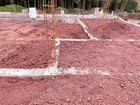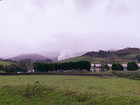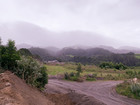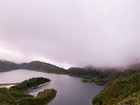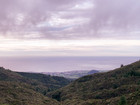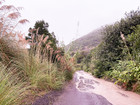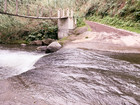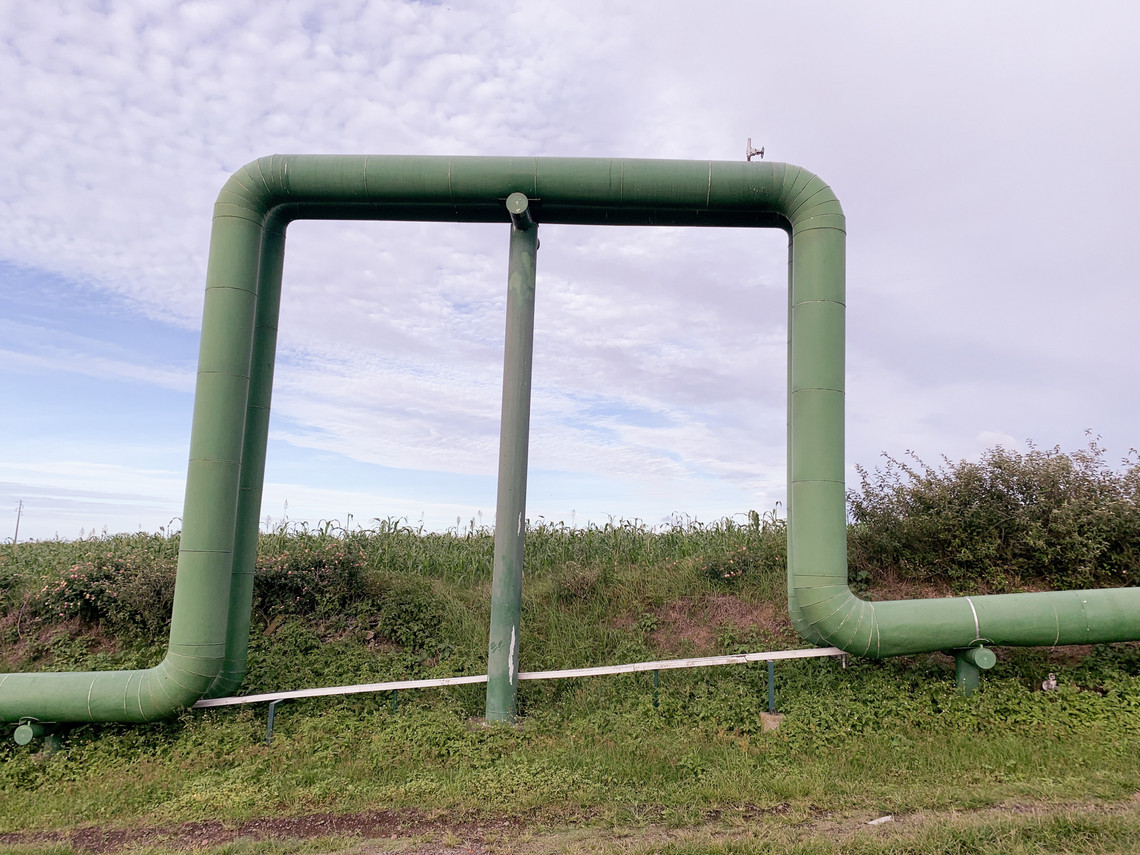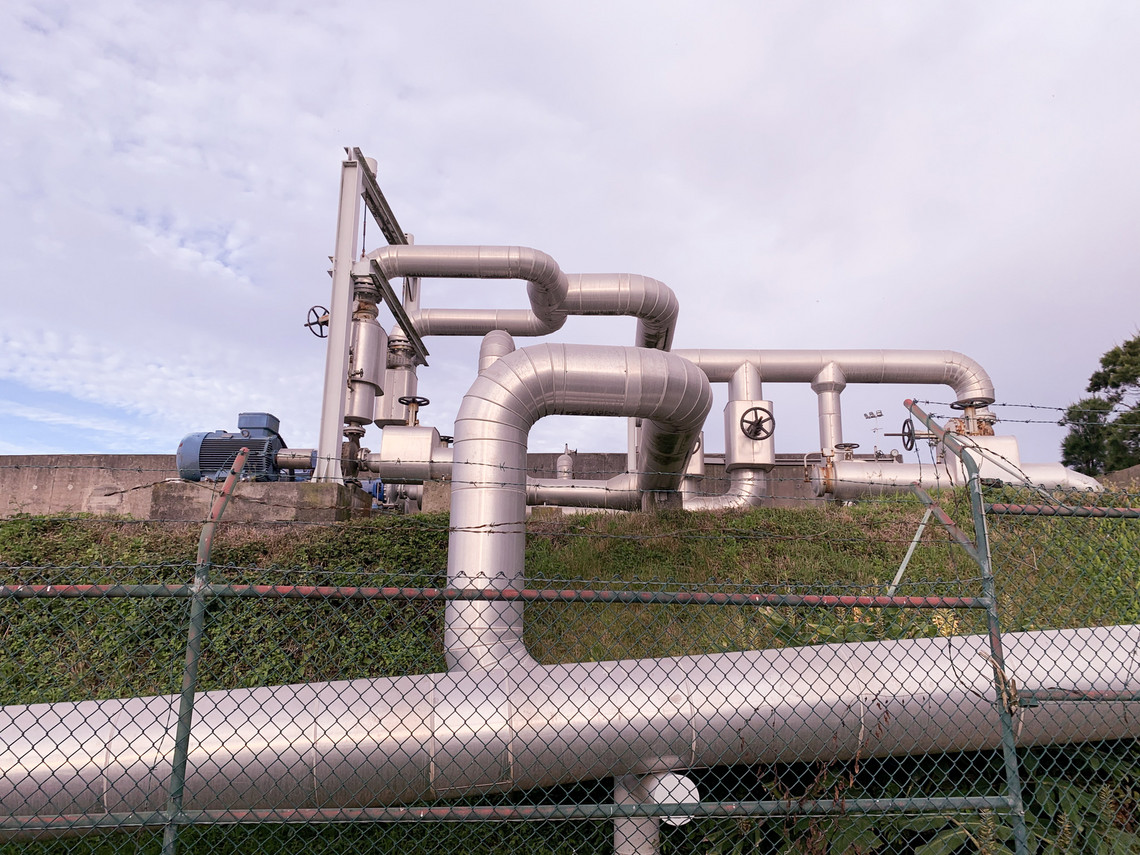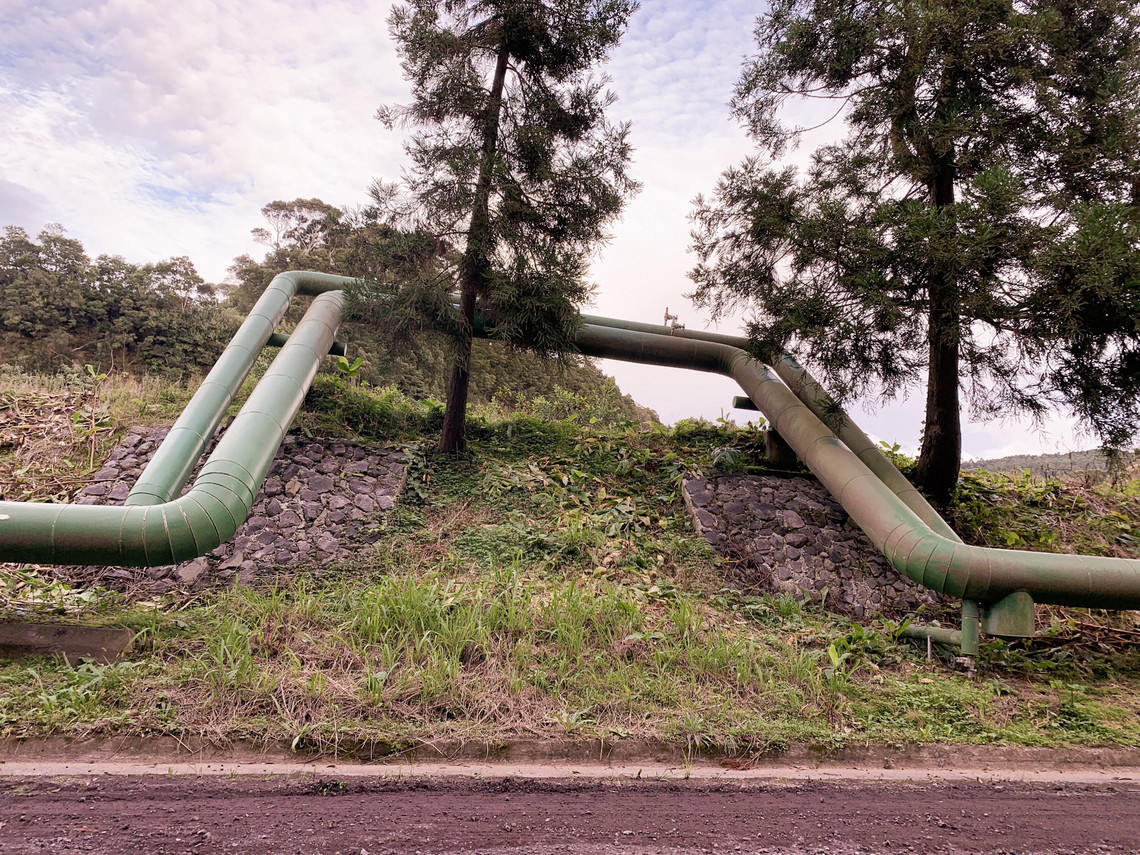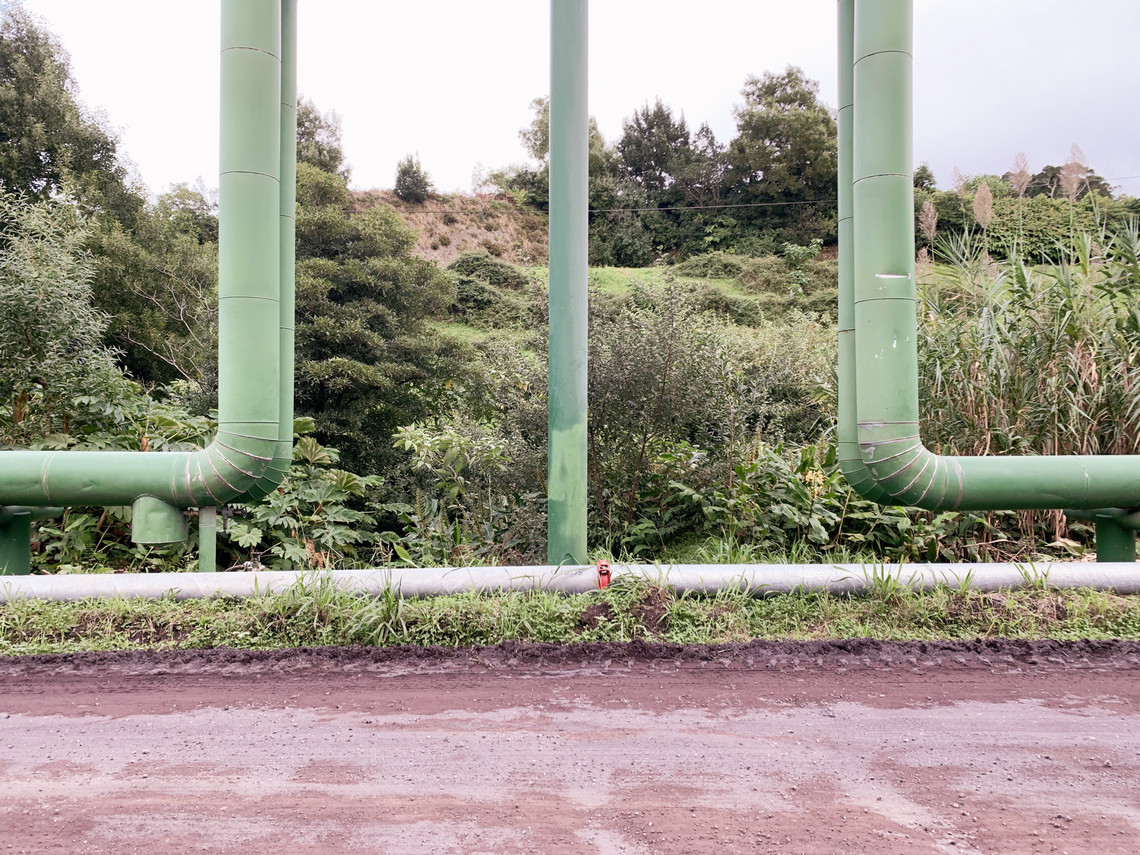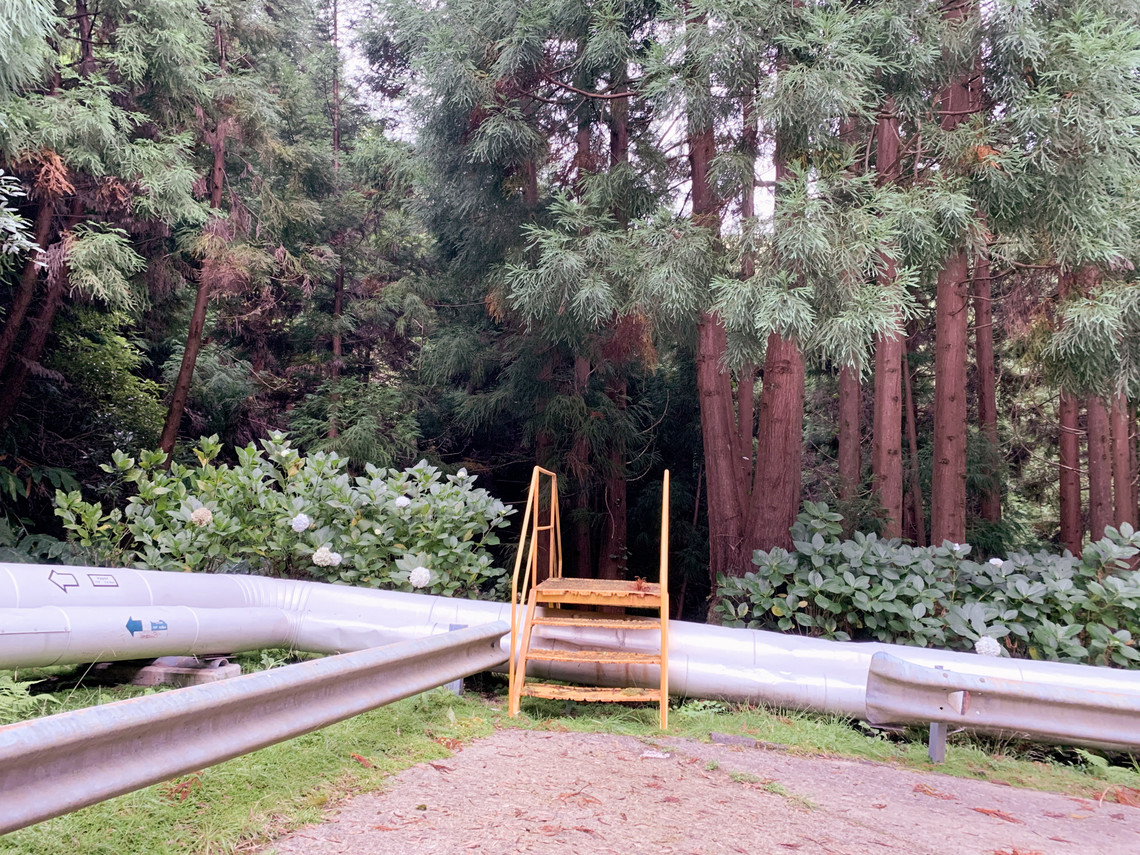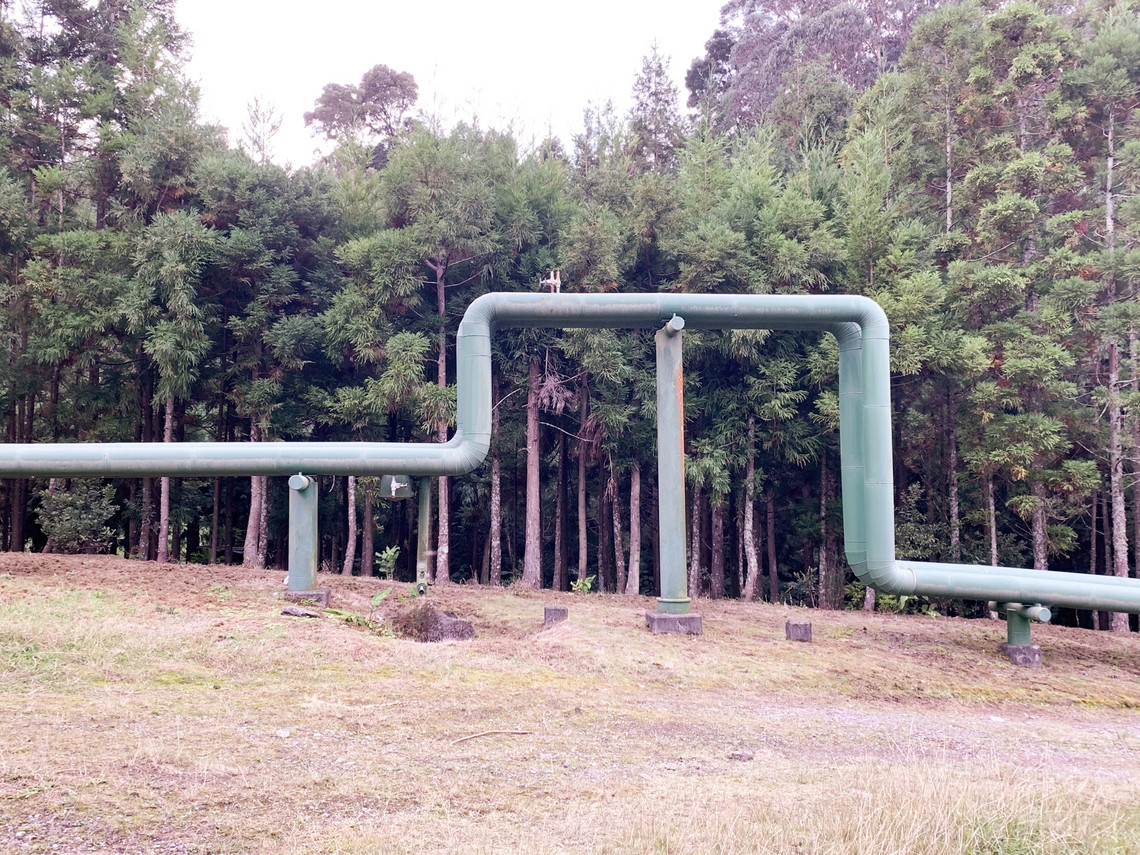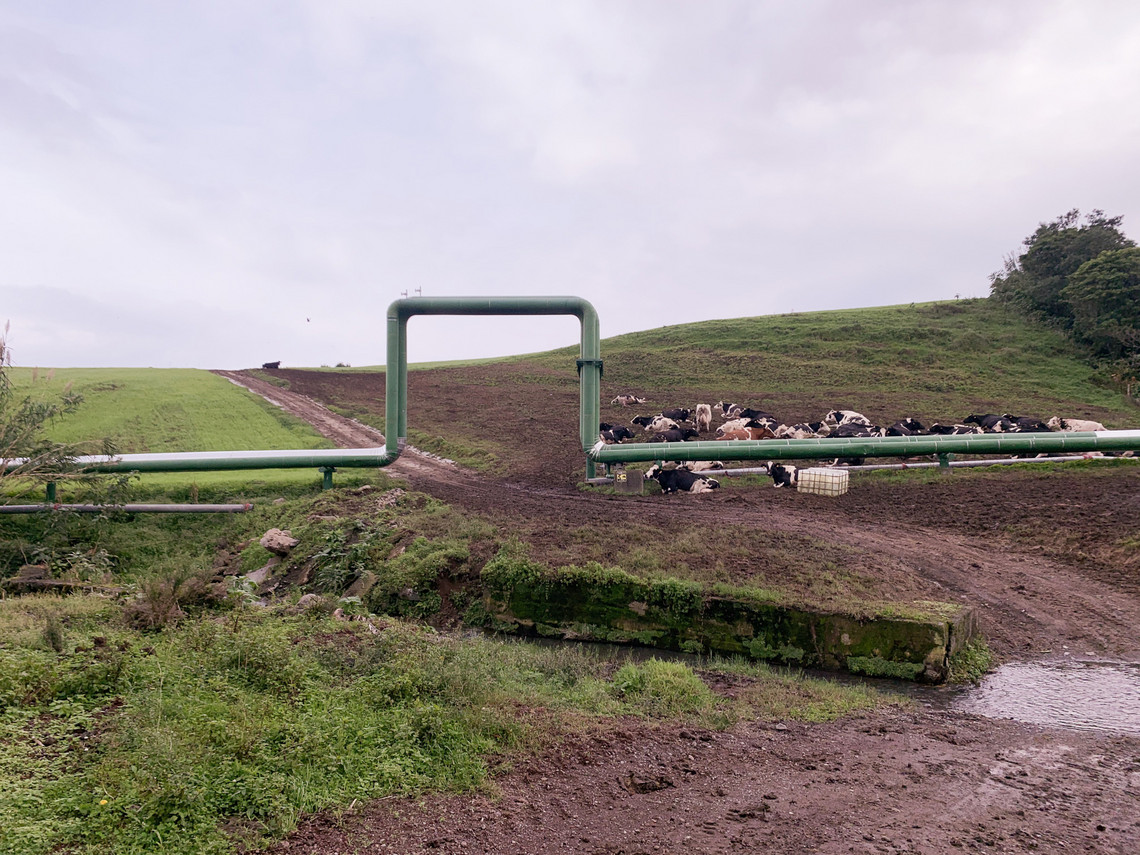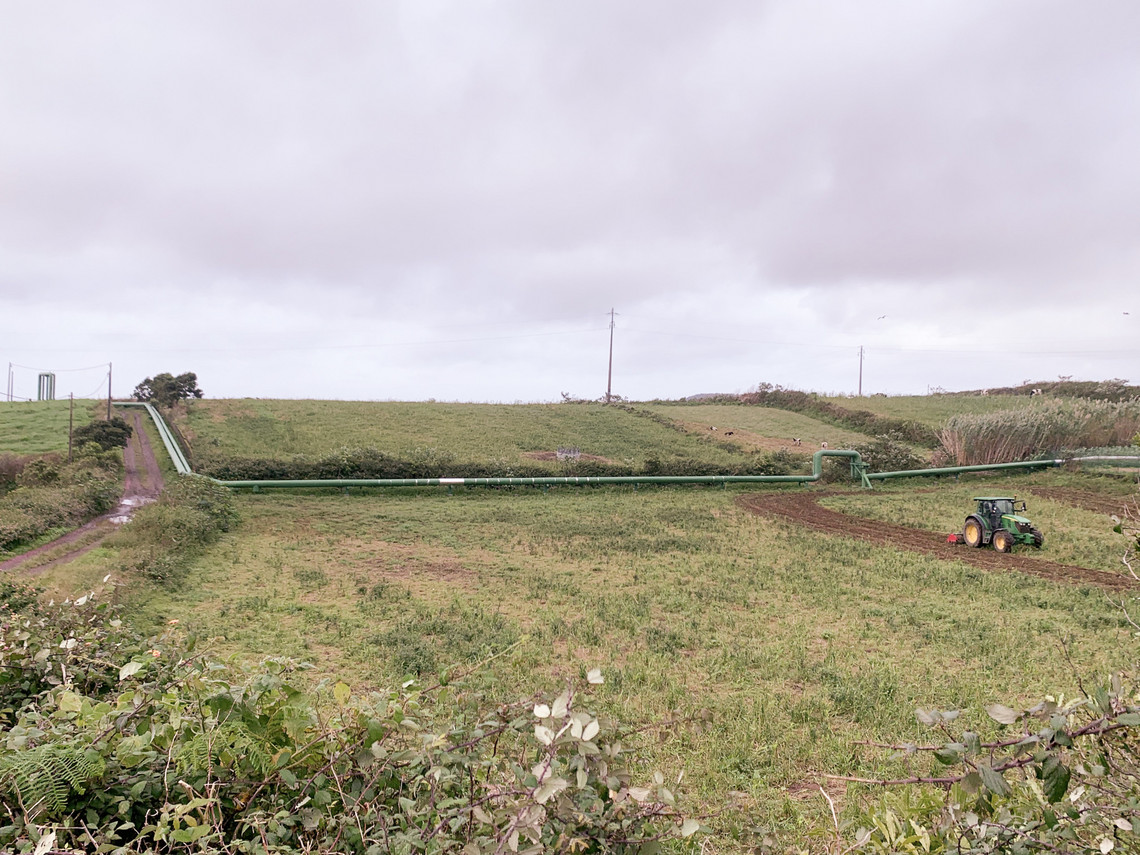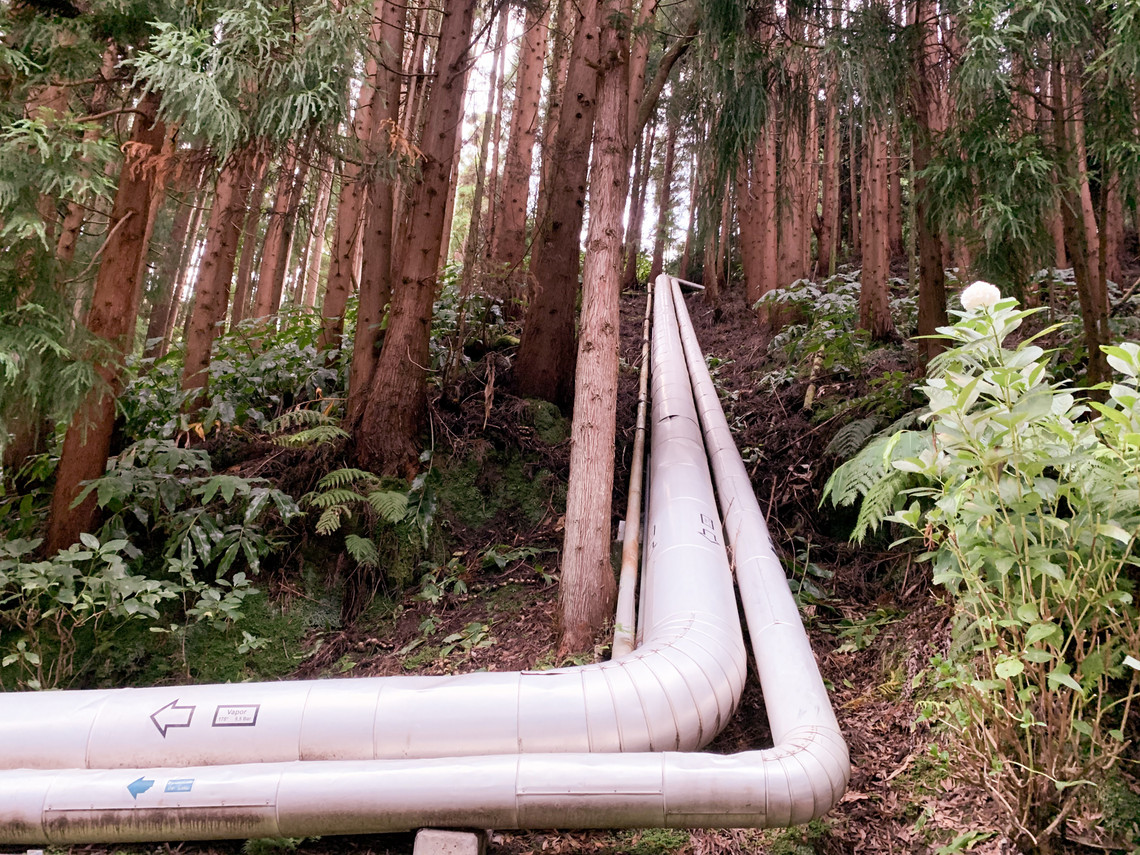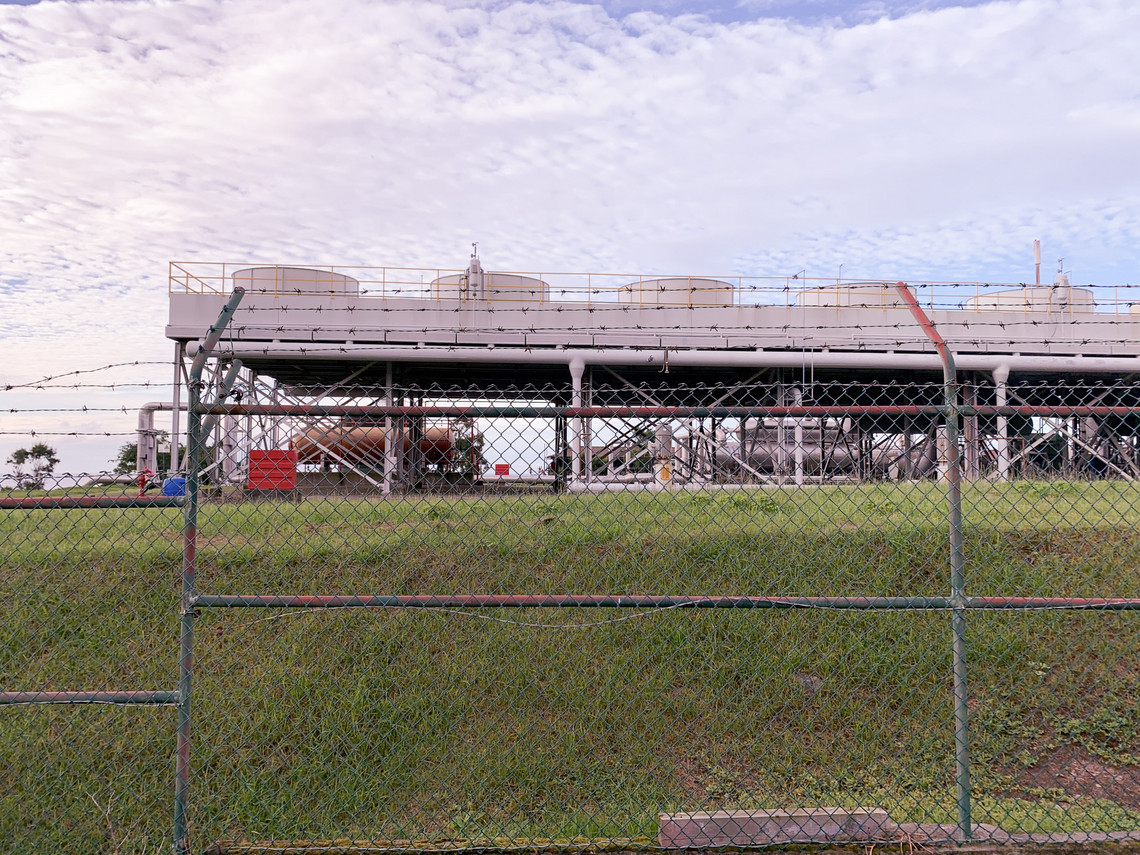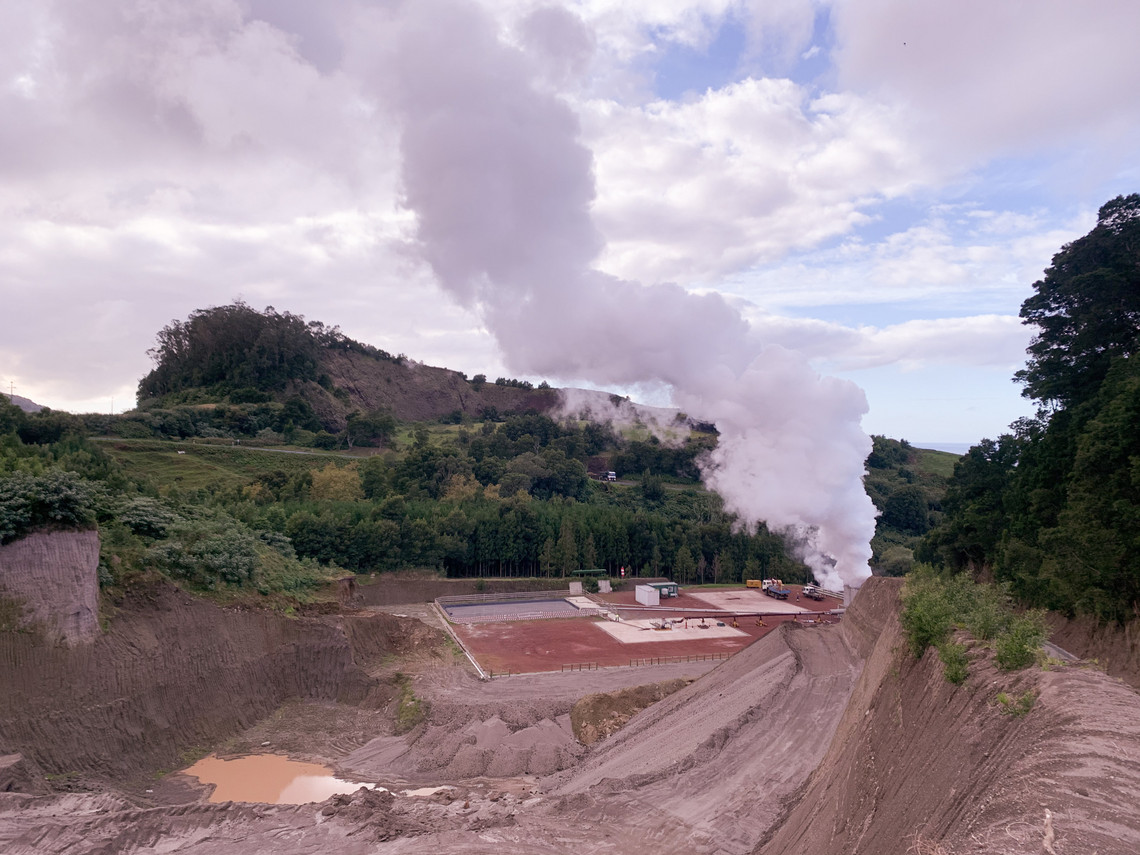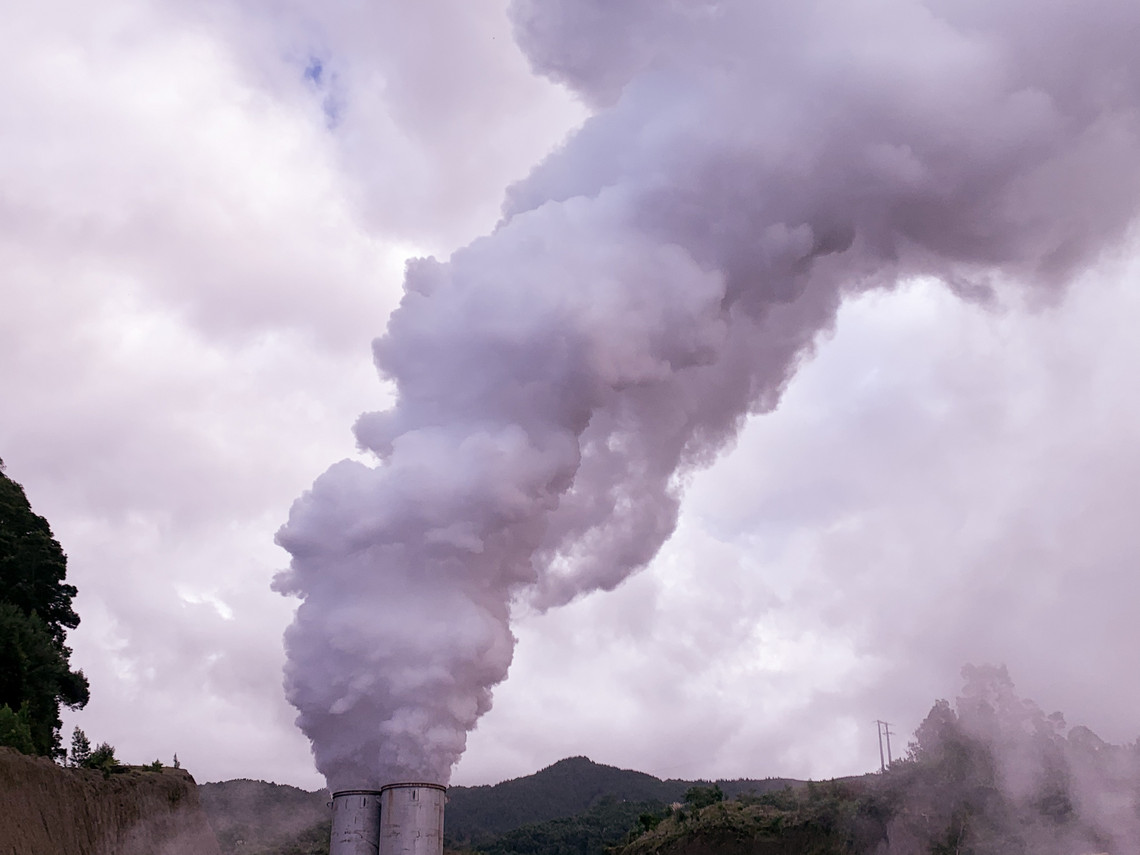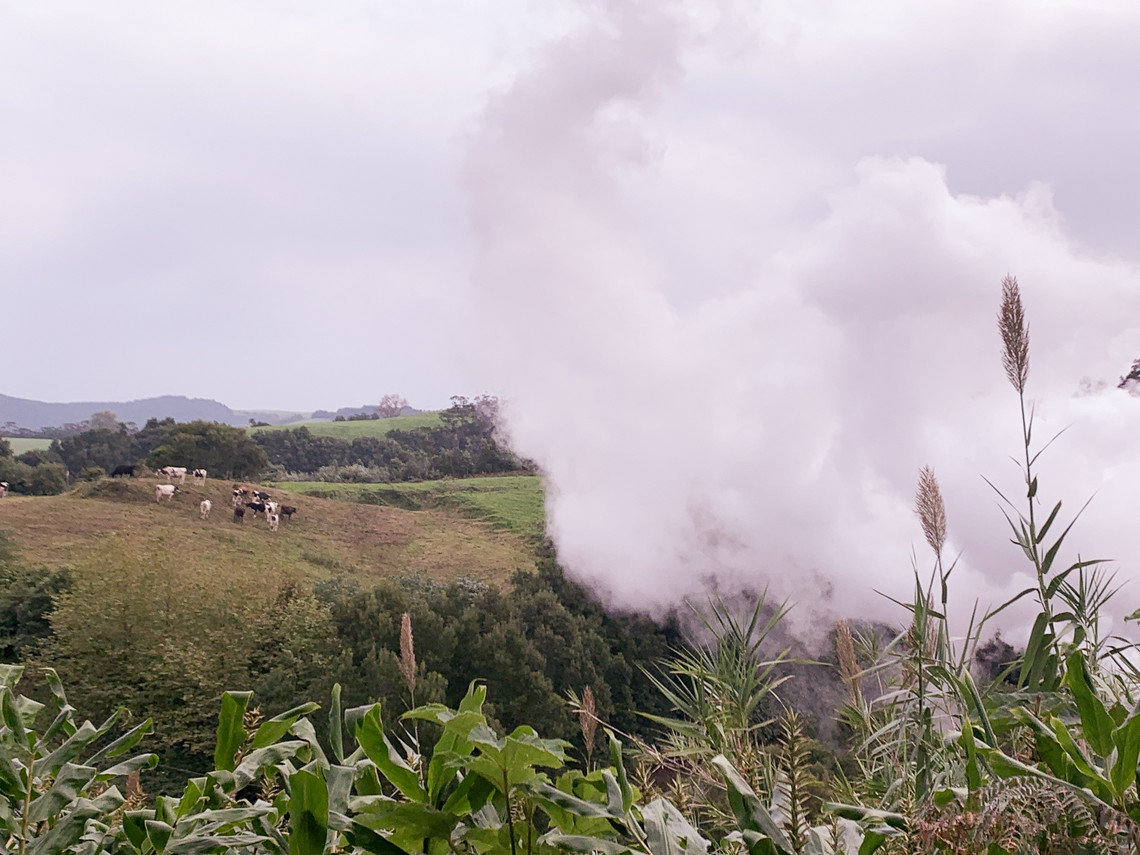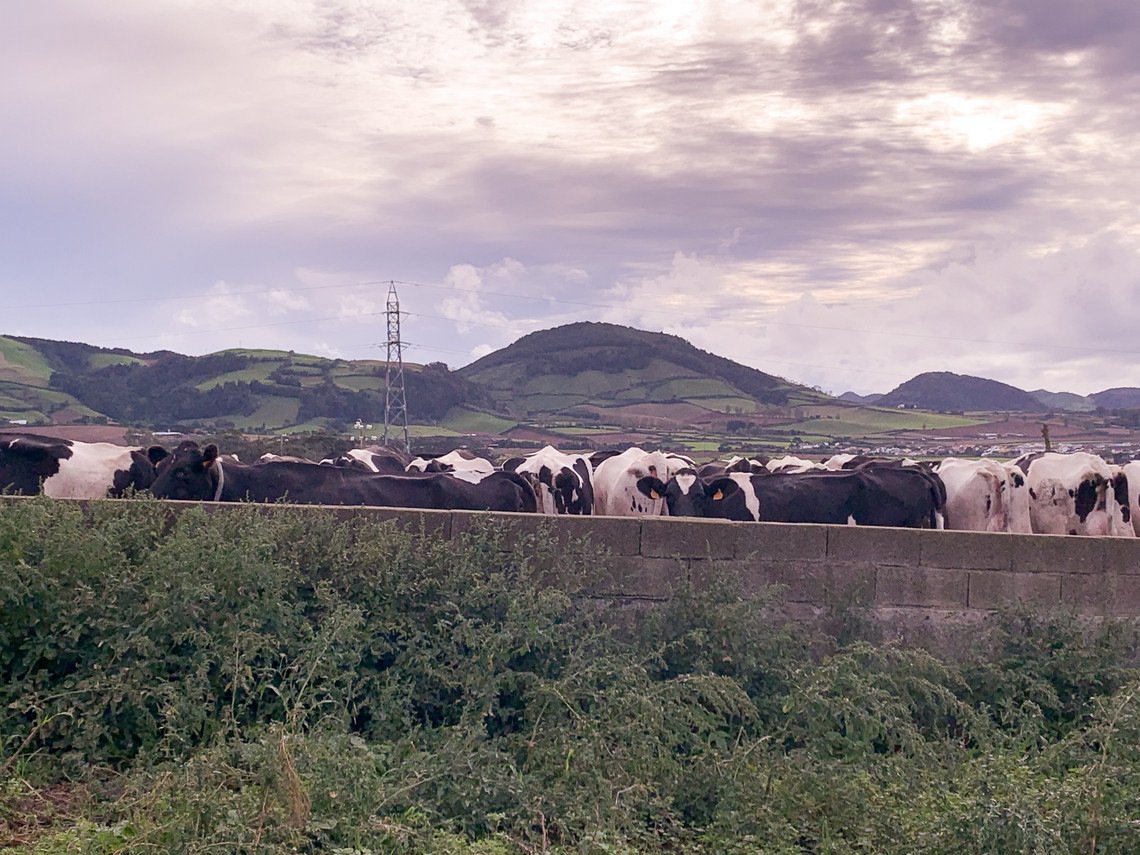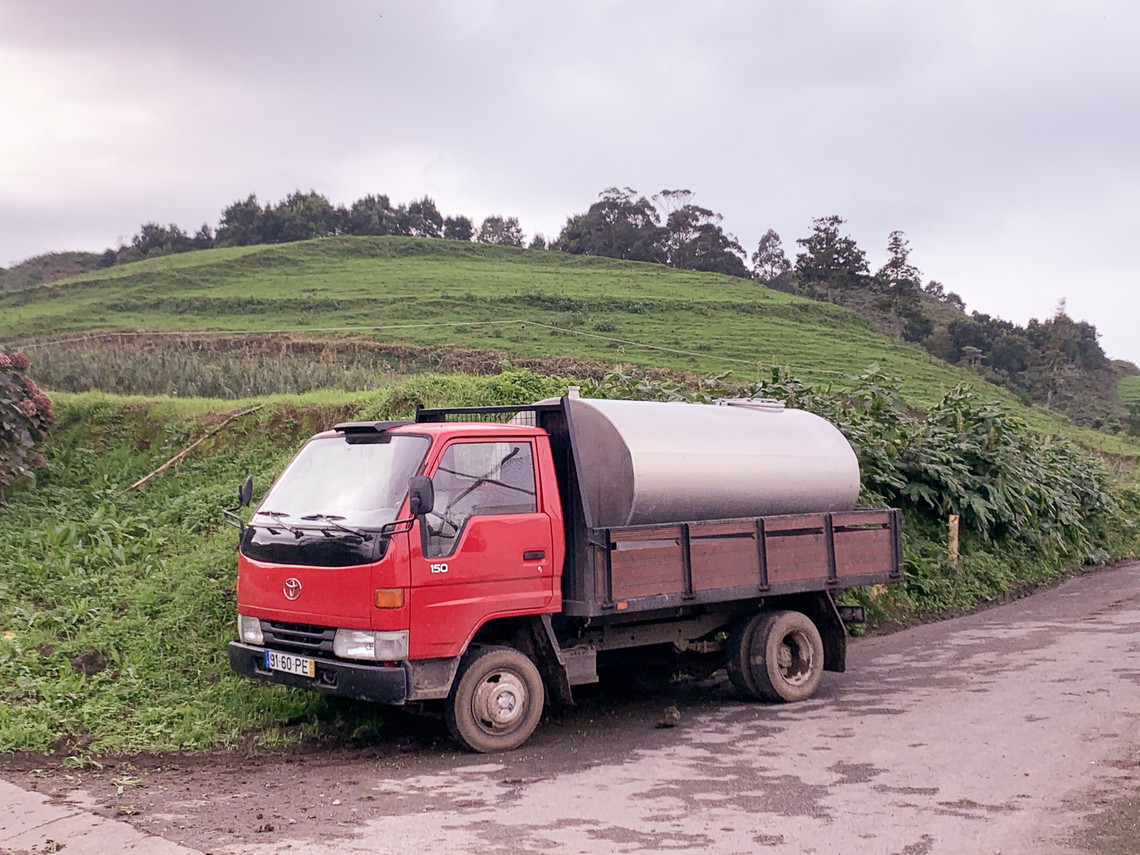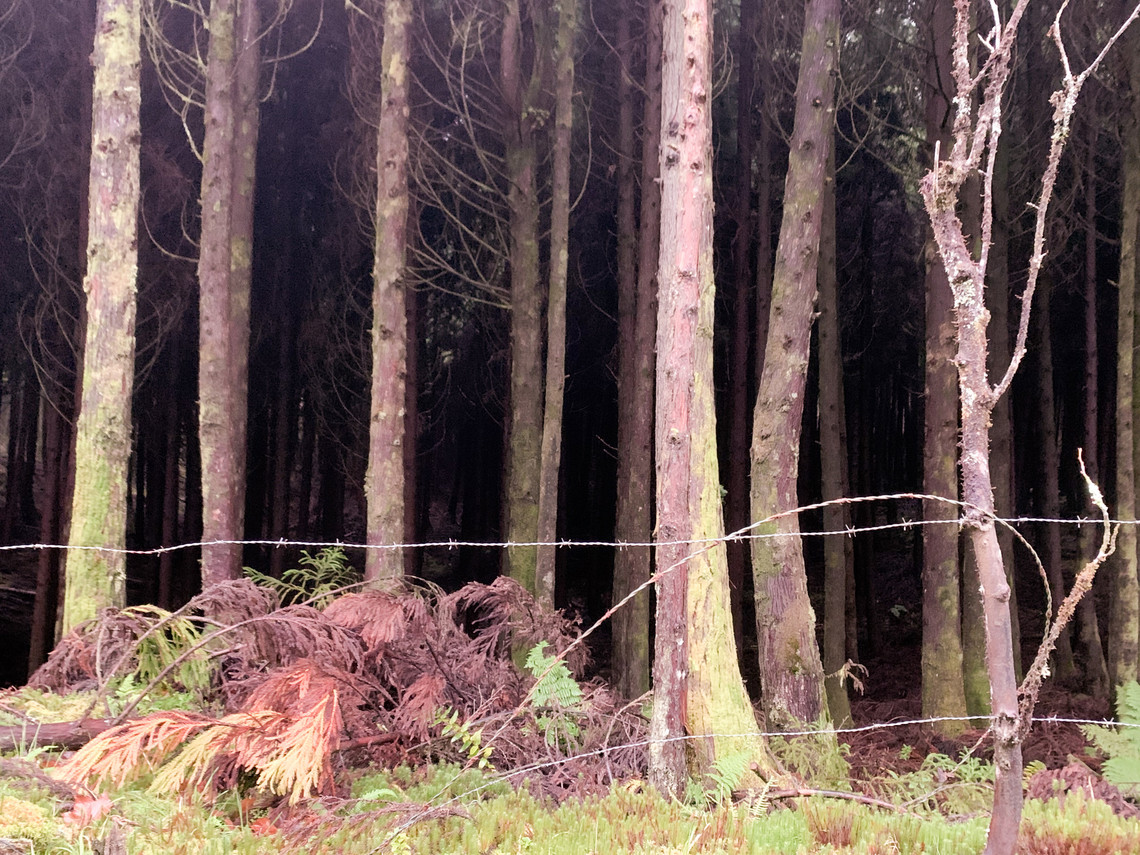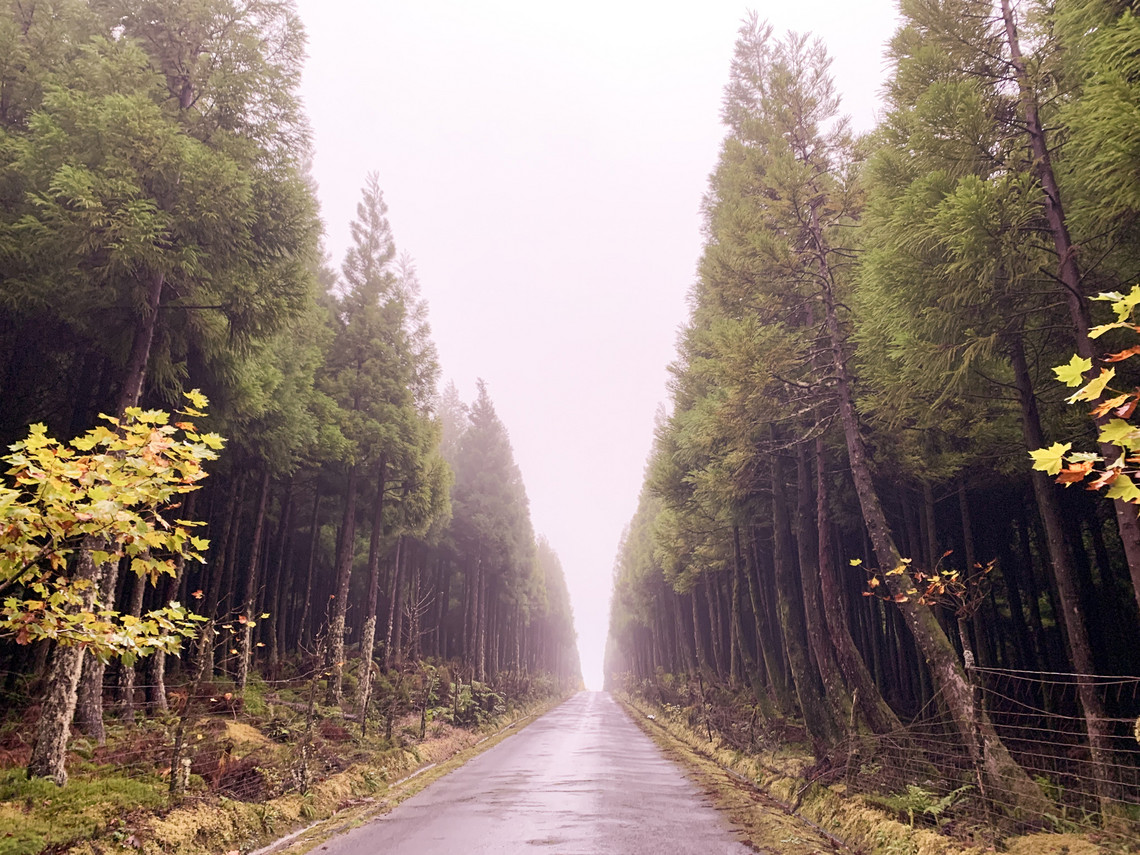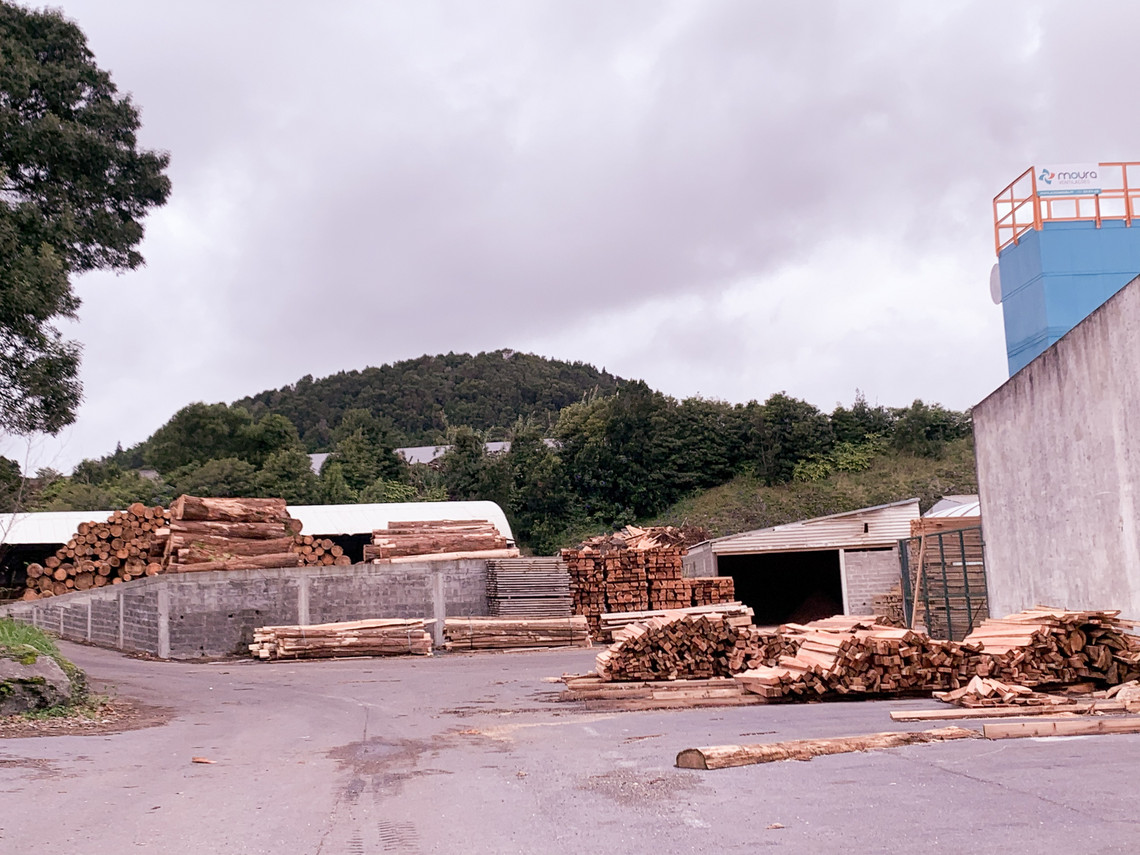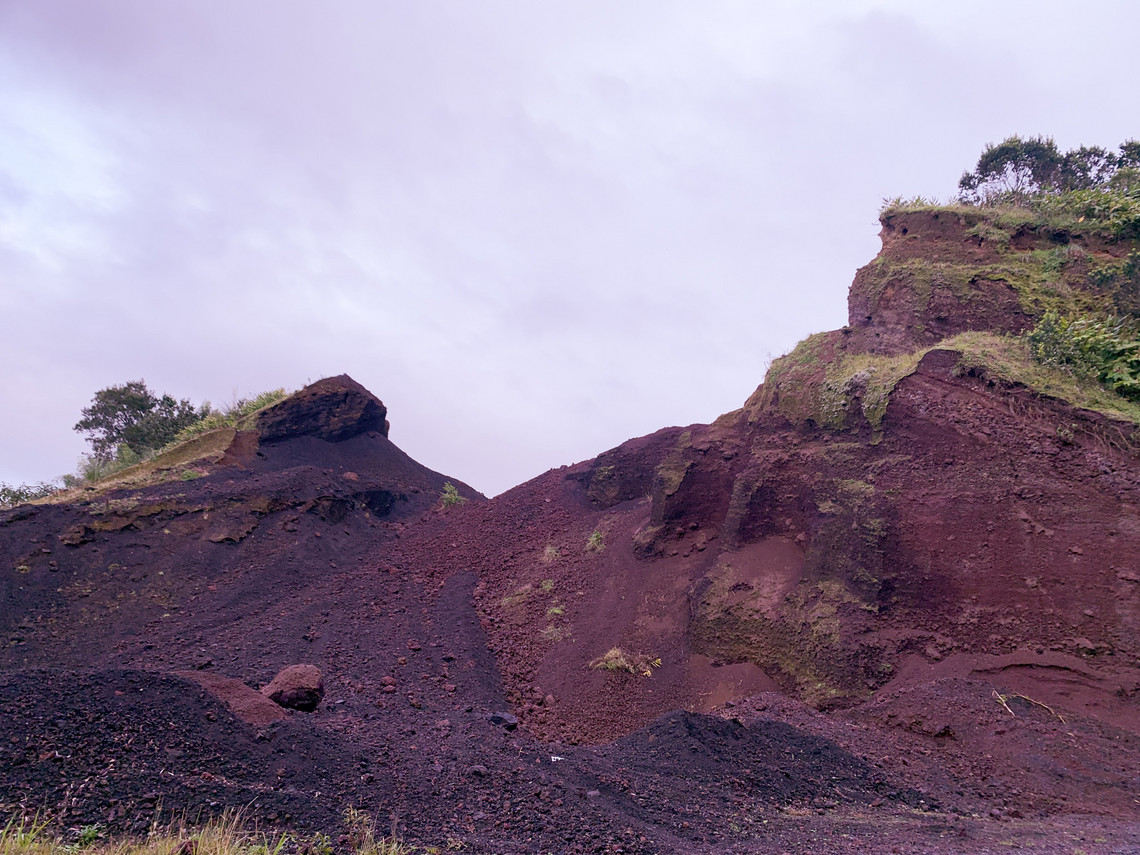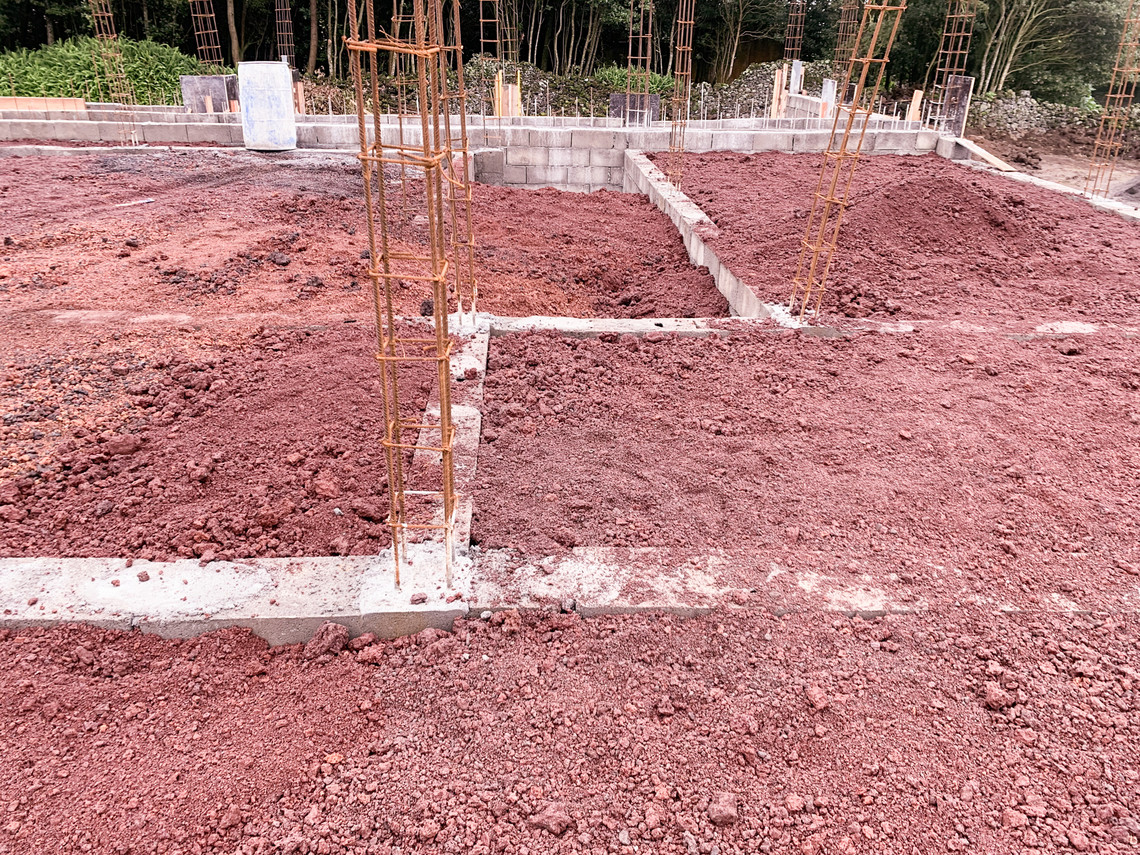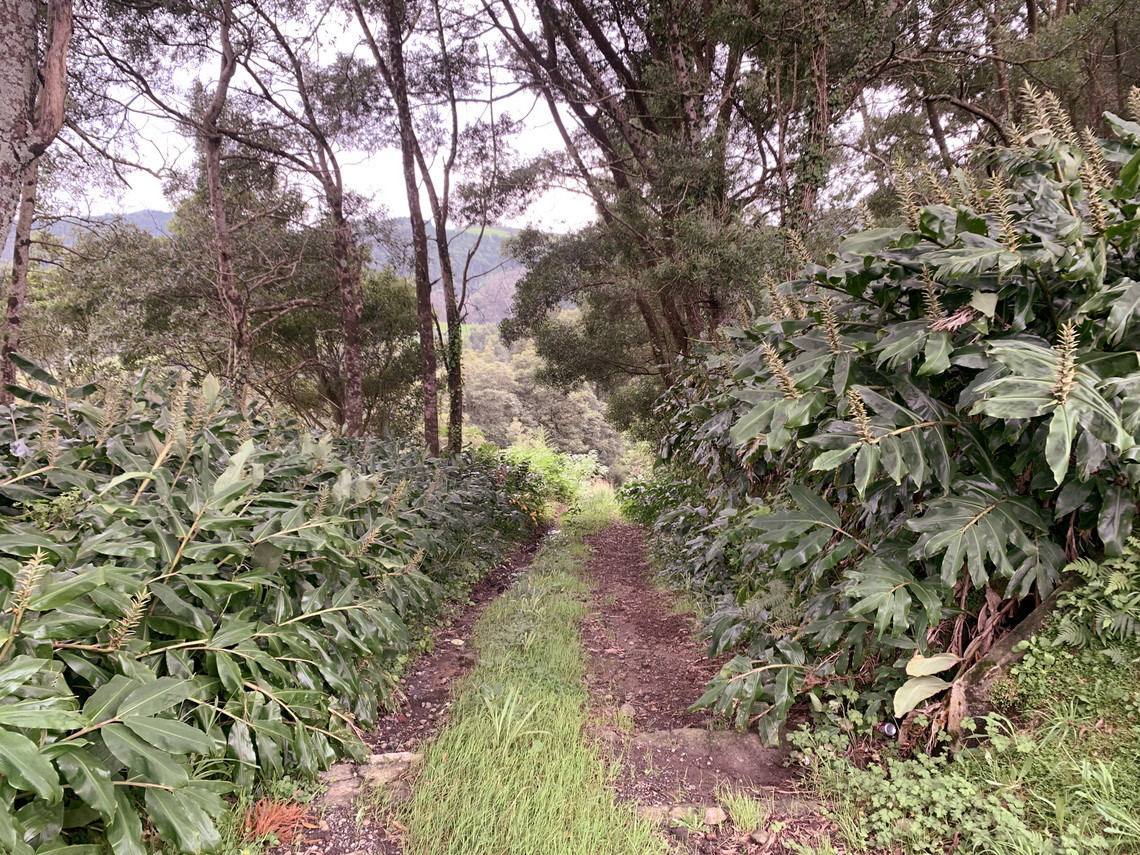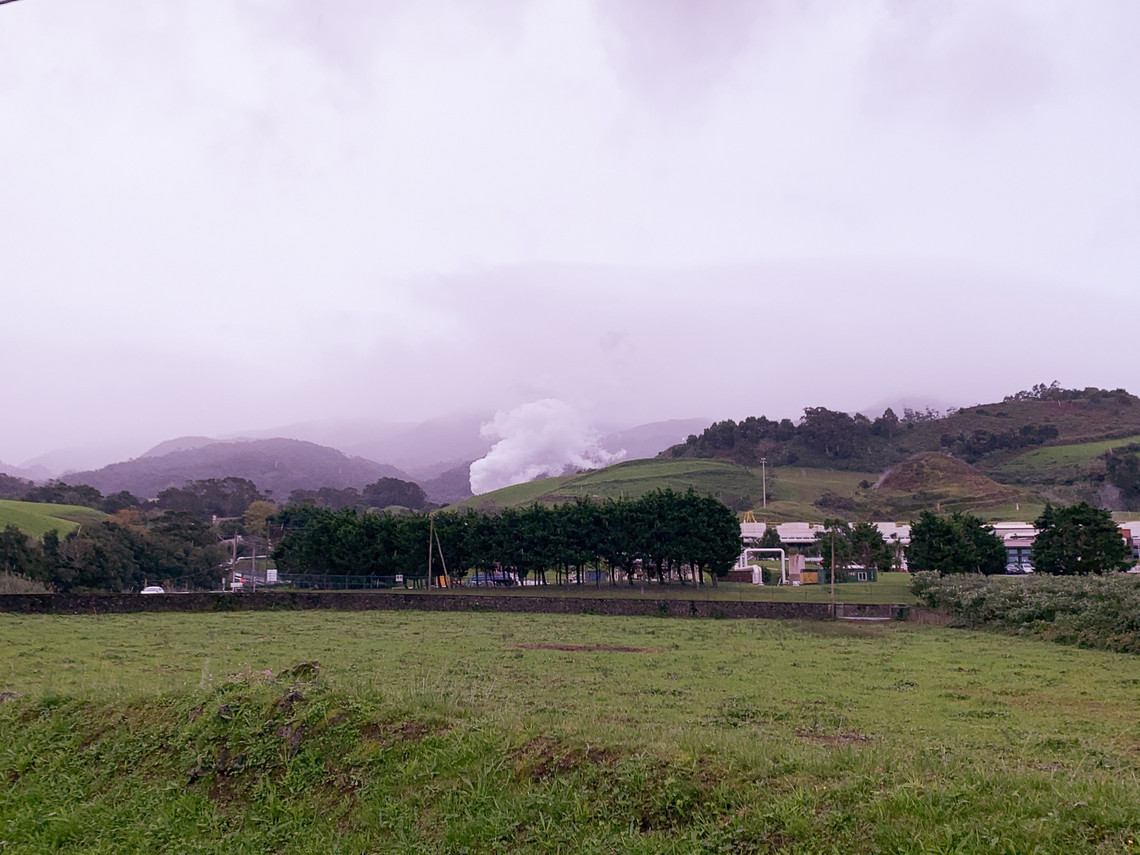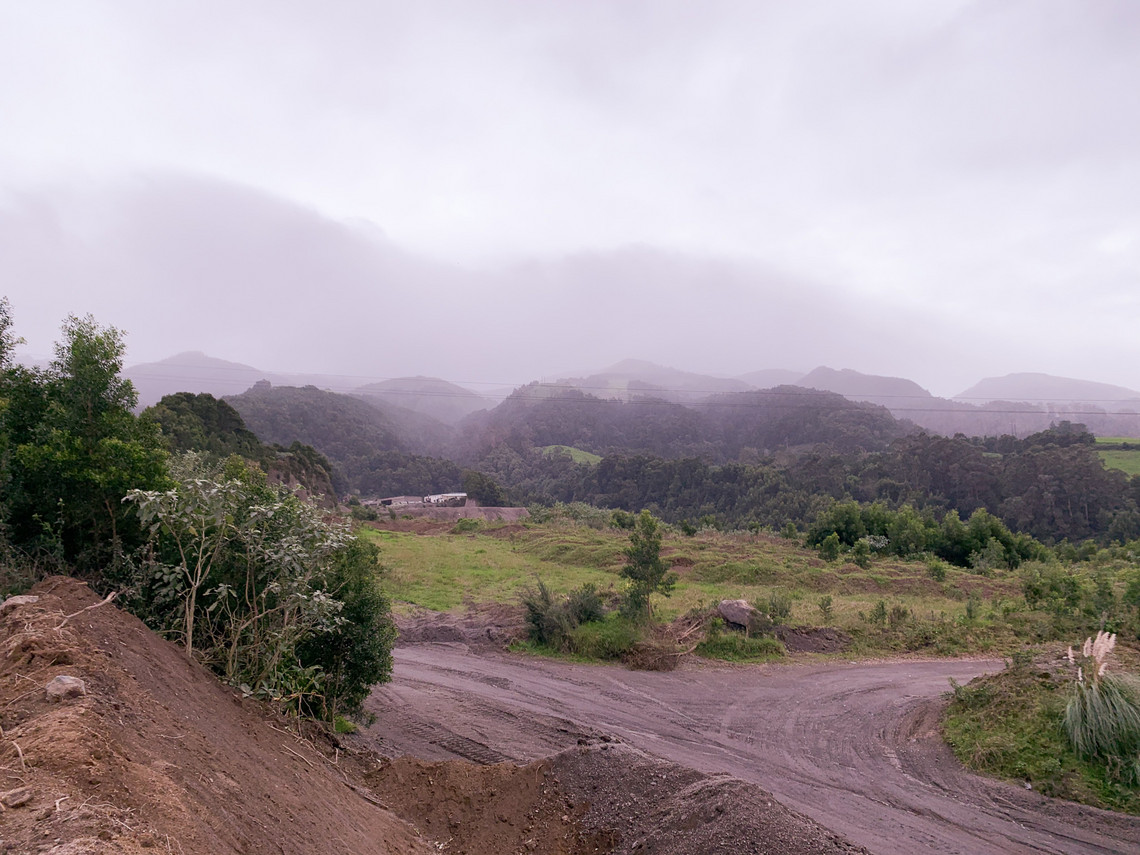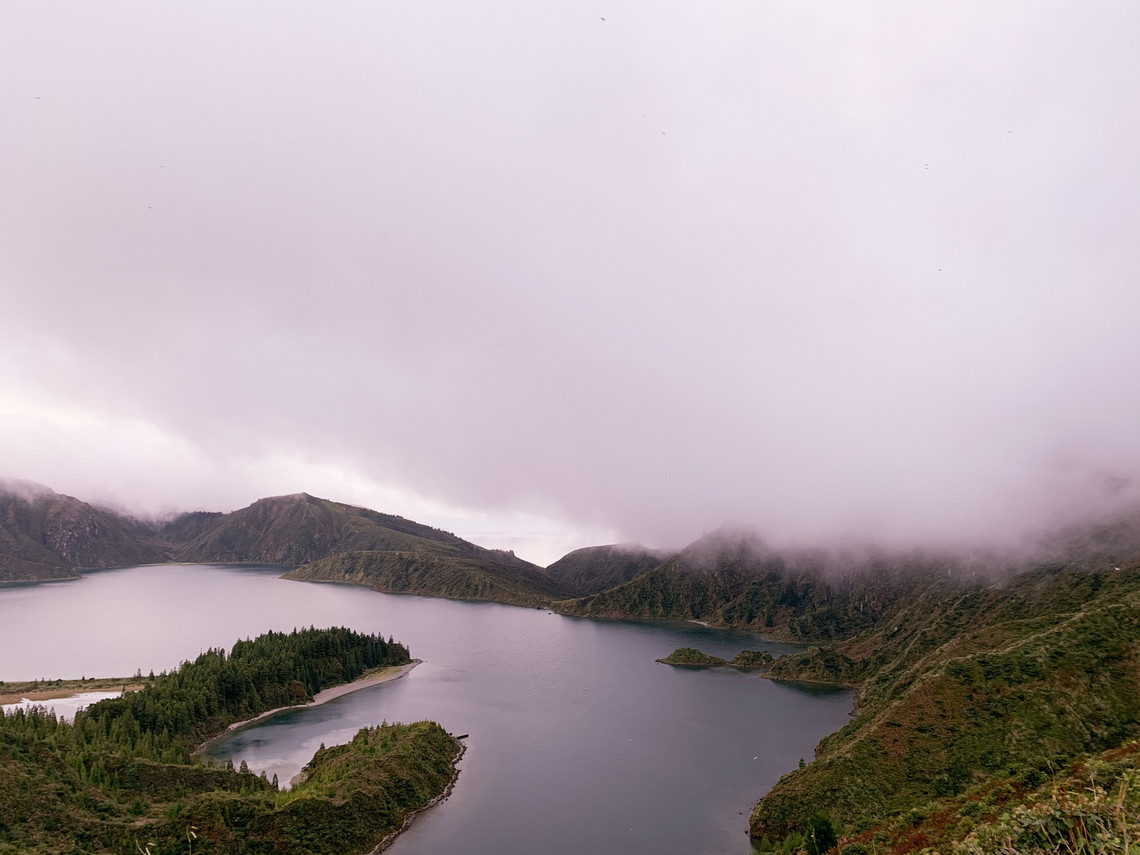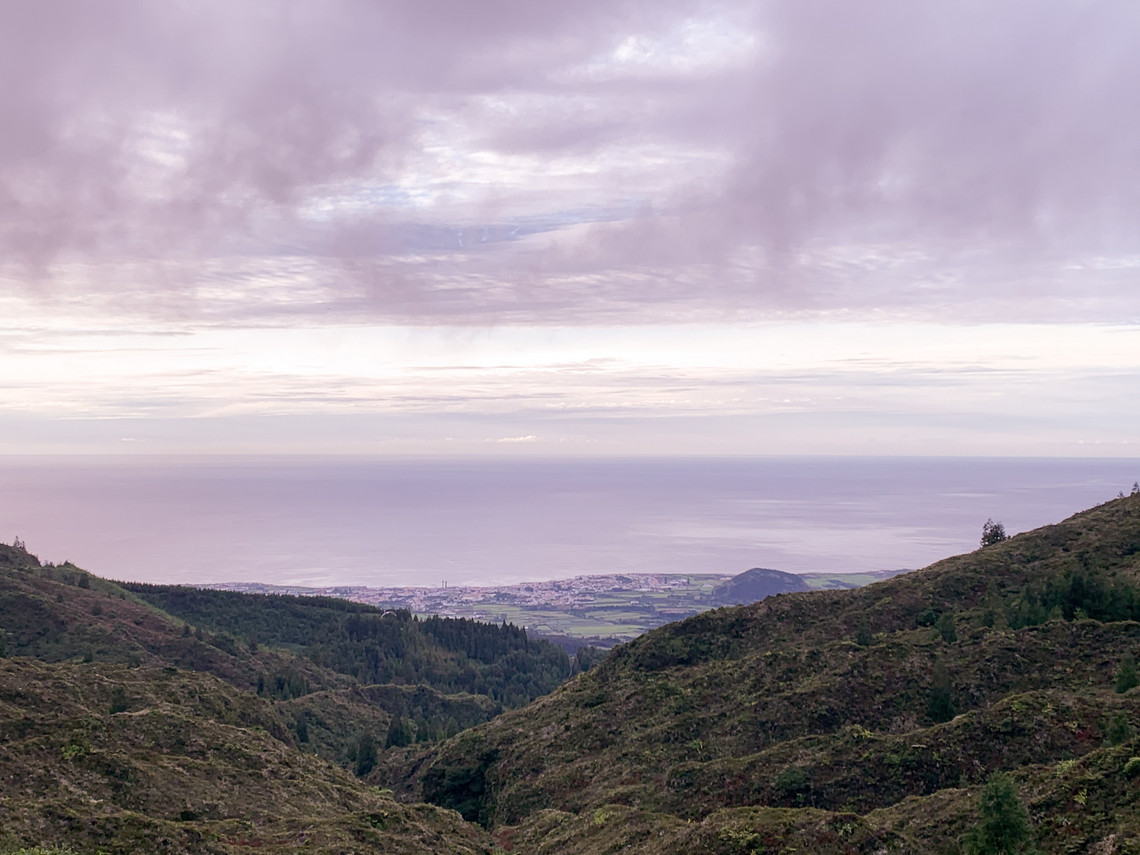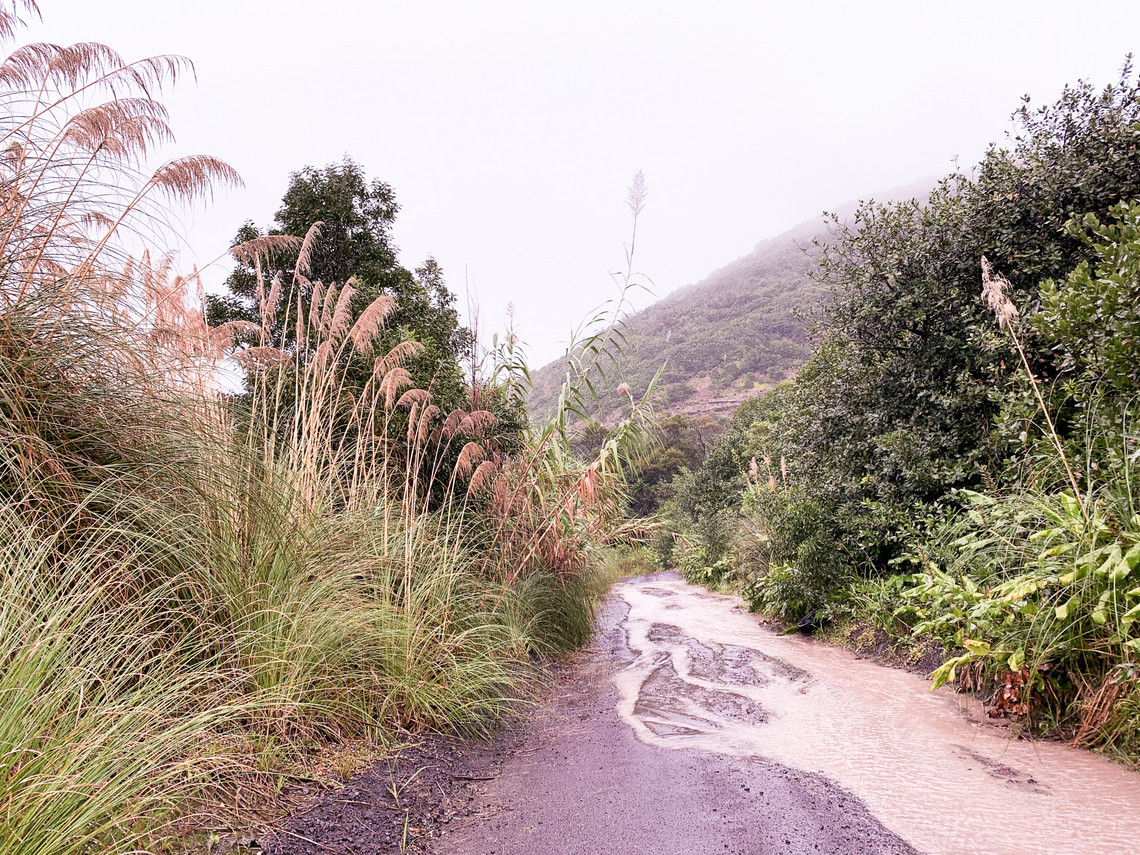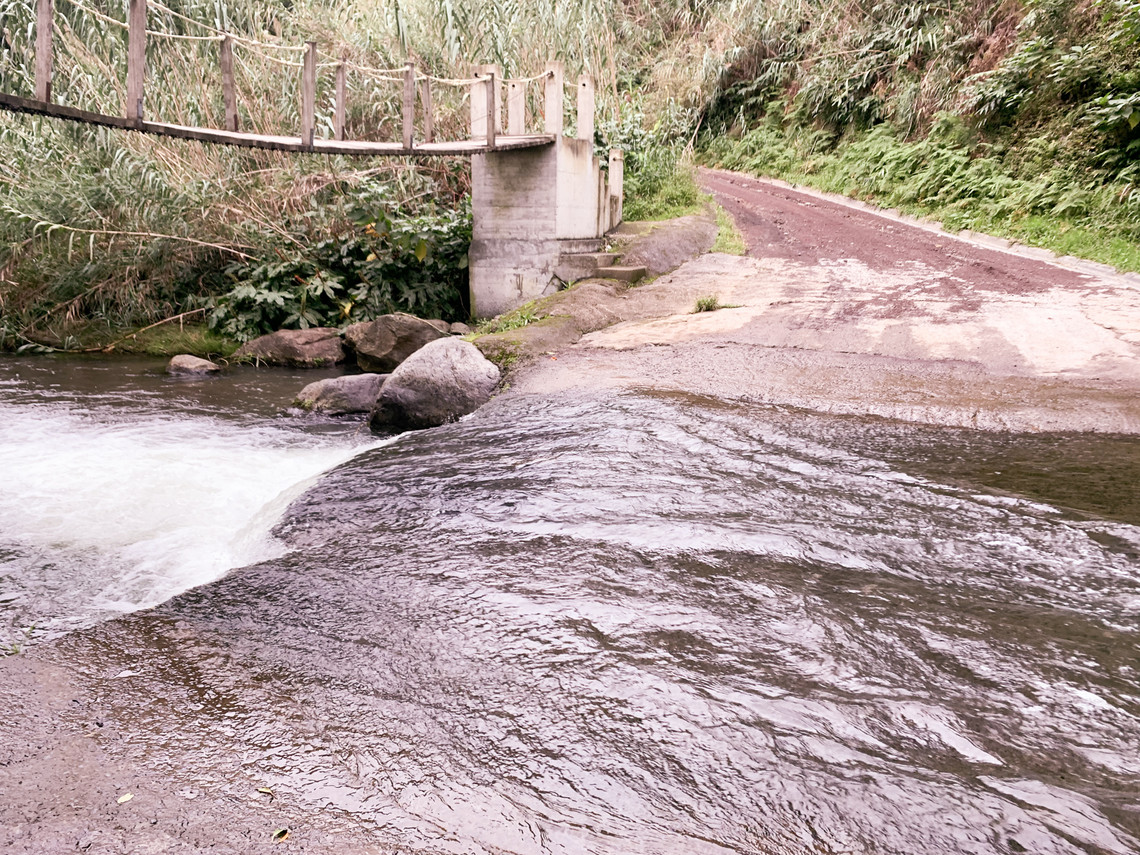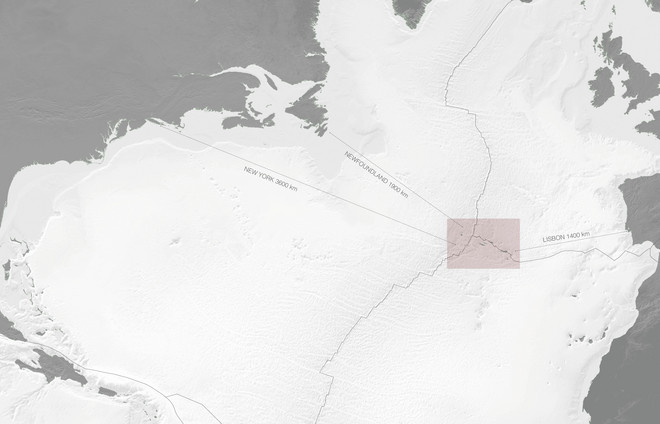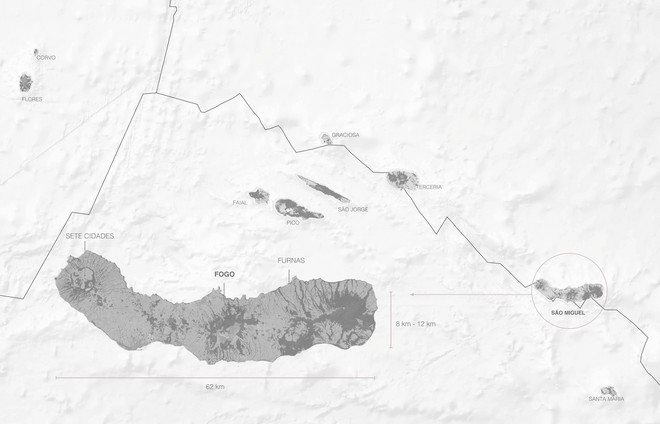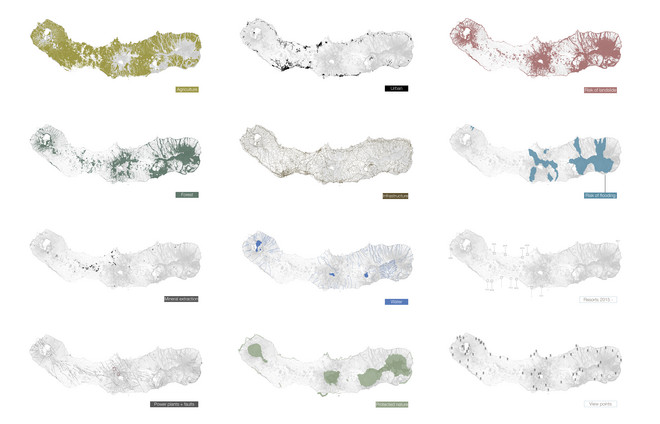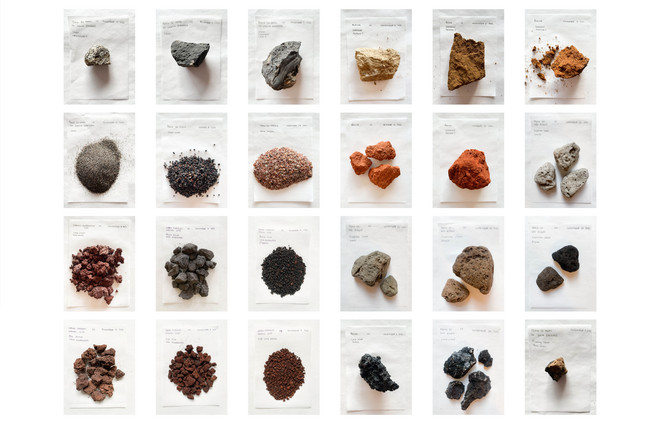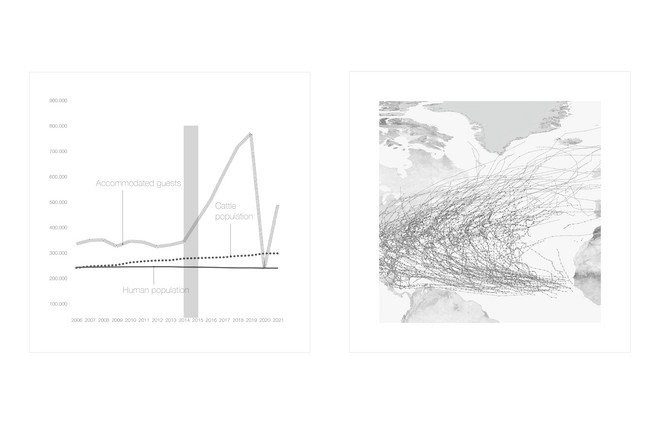

The Last Resort
We are on an island; a micro cosmos of multiple forms of human land-use, with climate hazards and passenger flights in the horizon. A resort places you as a tourist within it all. It wants you to reflect on the present industries, consumption, challenging the picturesque nature, the vacating-state-of-mind you traveled for. It suggests a new living landscape to recuperate other natural territories.
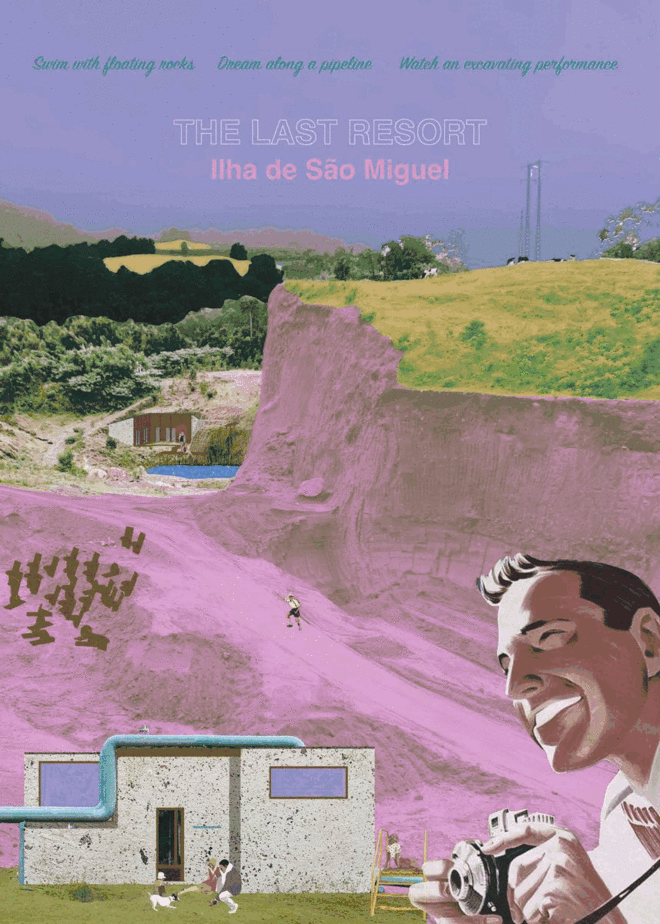
In this age of overarching anthropogenic landscapes, we have created a world in trouble. Humans have allowed themselves and continue to exploit, extract, excavate and explore resources on earth for human consumption and pleasures. Our use of land and disturbance of natural ecosystems is directly entangled with the reality of climate change.
It is within this context this diploma project places itself, but grounds itself on Sao Miguel, one of nine islands in the Portuguese Archipelago of the Azores. The site is a strip of land on the Northern side of a Fogo Volcano where pastures, power plants, gravel pits, Japanese cedar and tourist extractions meet. This meeting is characterised in this project as active-industrial nature.
[[{"fid":"285284","view_mode":"top","fields":{"format":"top","field_file_image_alt_text[und][0][value]":"","field_file_image_title_text[und][0][value]":""},"type":"media","attributes":{"class":"media-element file-top"}}]]
Between this double meaning of the word ‘resort’ the architectural programme unfolds. A resort is embedded into this active-industrial nature. However, the nature of it profoundly challenges the immediate connotation of such a tourist destination. It is a all-inclusive experience, but far from its original sense.
The resort invites visitors to experience a different kind of nature; to hear the sounds of milking and cows, to study rows of trees grow, to disappear in geothermal steam, to shower in heavy rain falls, to see the growth and coloring of algae, lichen, moss on walls, to sleep along a pipeline, to feel the gravel falling from the crusher machine, to smell the earthy gasses and dung, to watch the excavator reshape the ground, to experience the different natural materials and related industries of Sao Miguel.
Within this frame the project playfully explores how new tourist destinations weaved into this landscape can become subtle didactic spaces. Spaces that challenges the tourist, their vacating-state-of-mind, the nature they idealize and travel to experience; to face us, even when on vacation with the industries and their activities on our vulnerable sustaining our current rate of consumption.
Finally, the resort becomes a speculation on how we can begin to dissolve the seperation of human landuse and rather entangle and combine layers of human disturbance. So we can limit our use of land, and create new complex living landscapes while recuperating other natural territories.
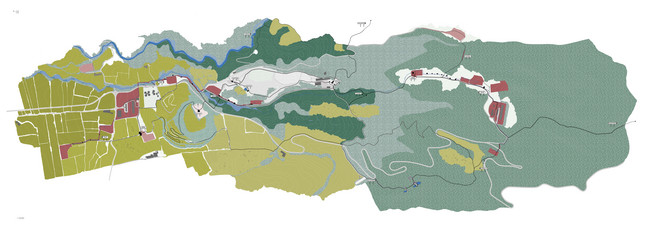
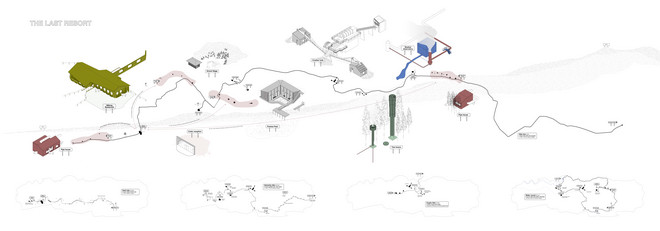

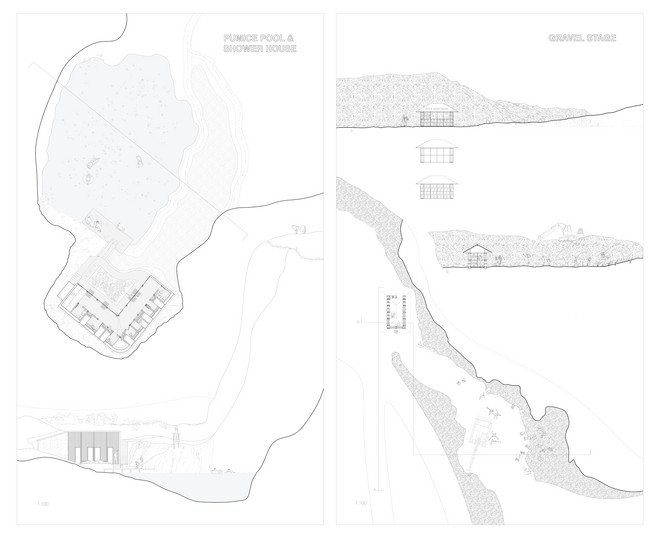
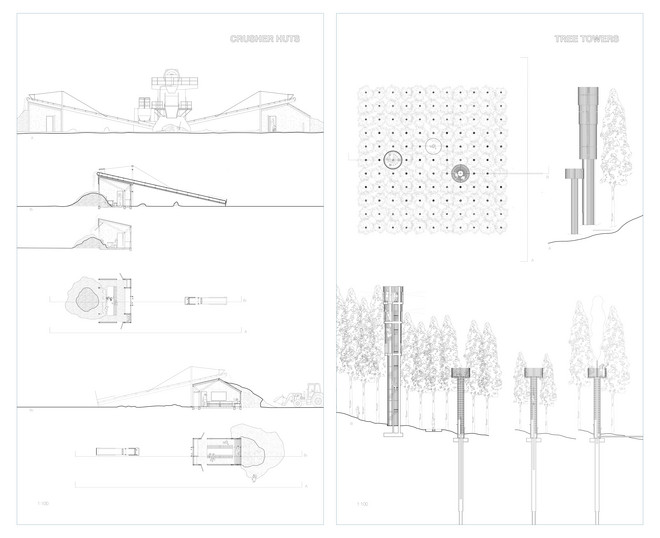
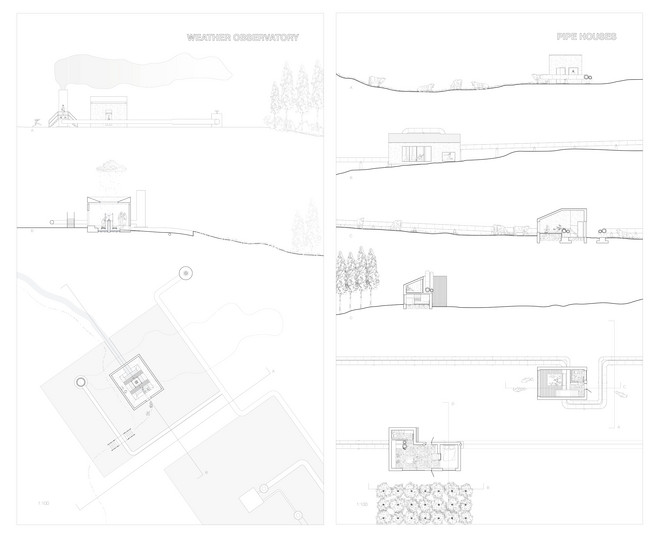



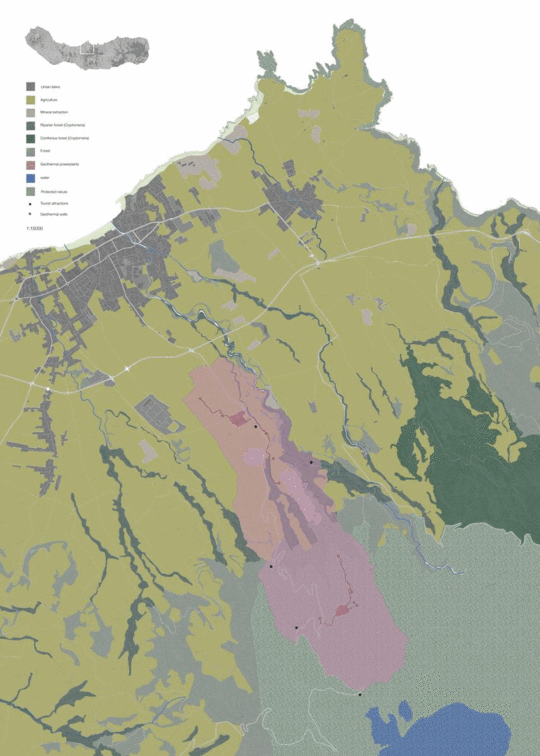
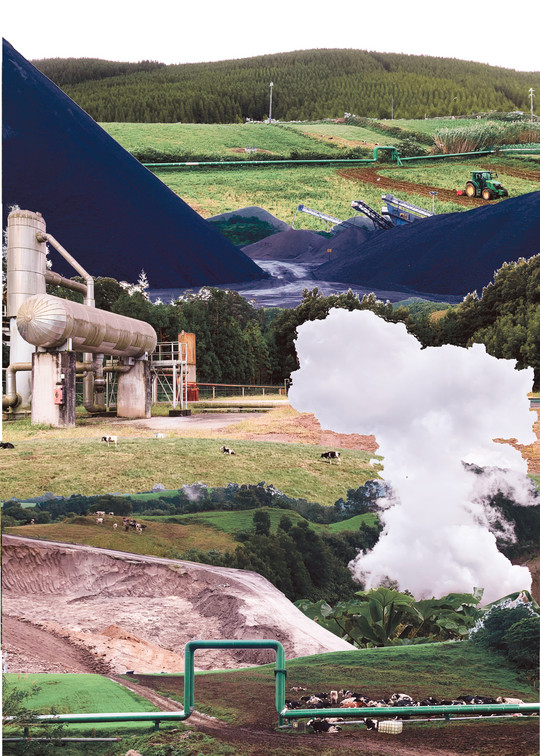

Det Kongelige Akademi understøtter FN’s verdensmål
Siden 2017 har Det Kongelige Akademi arbejdet med FN’s verdensmål. Det afspejler sig i forskning, undervisning og afgangsprojekter. Dette projekt har forholdt sig til følgende FN-mål